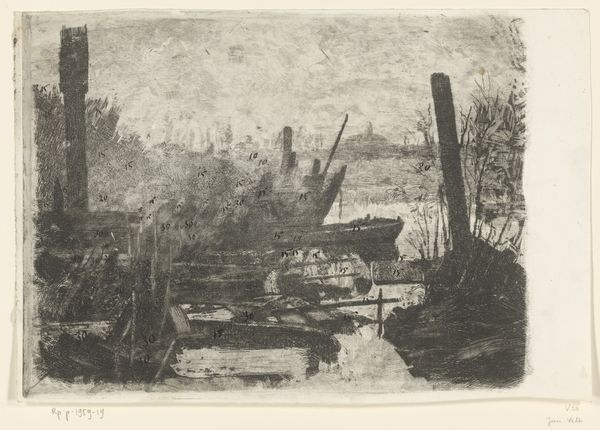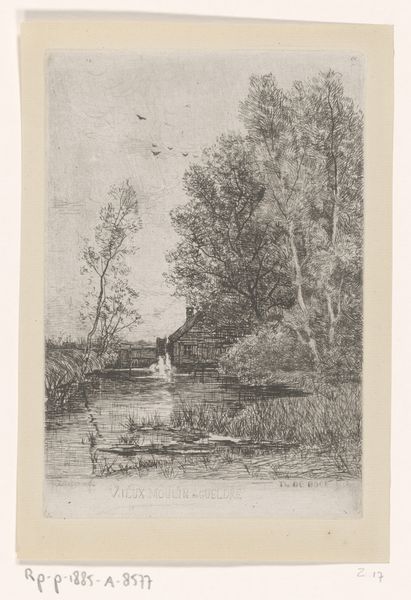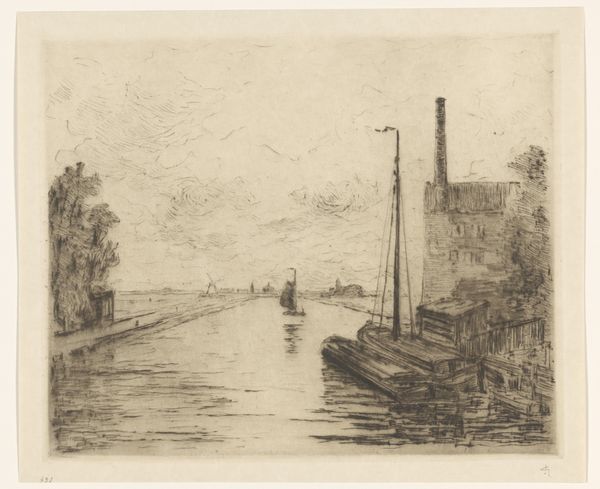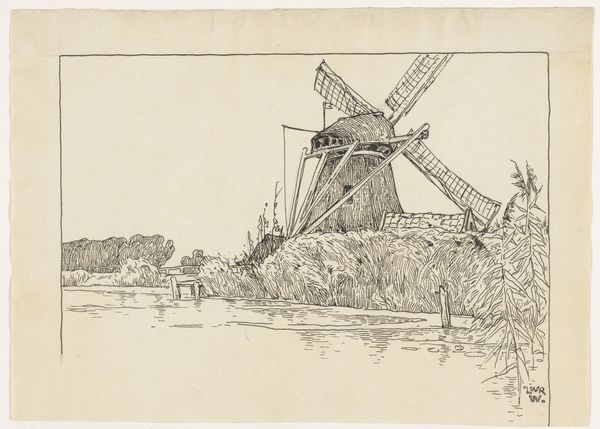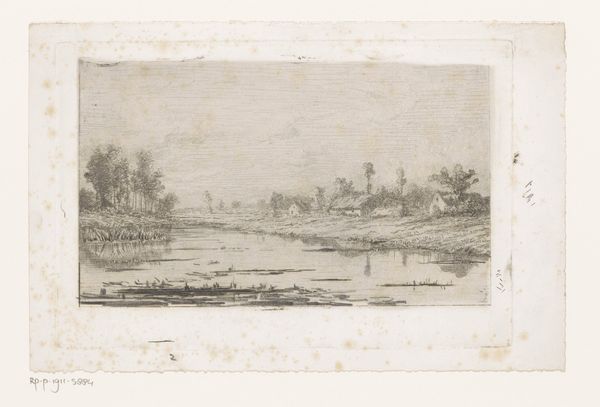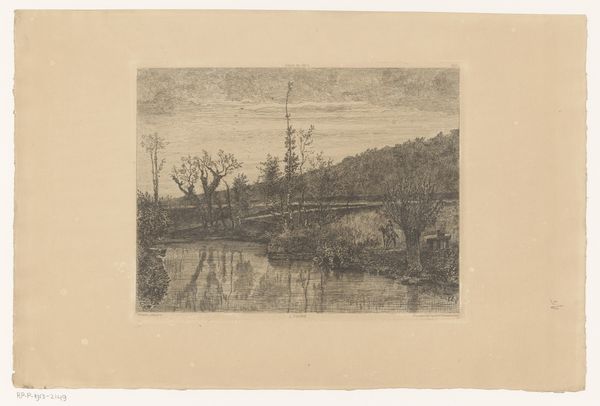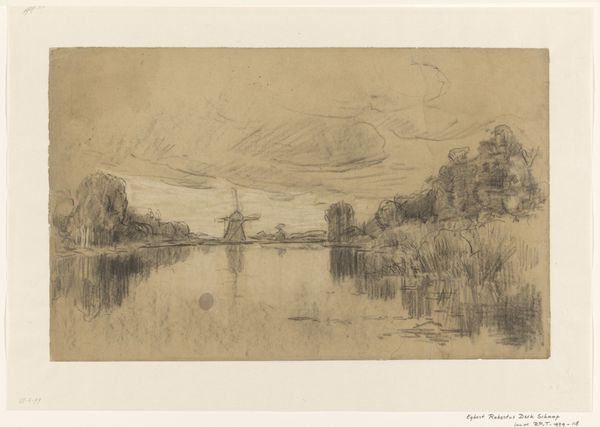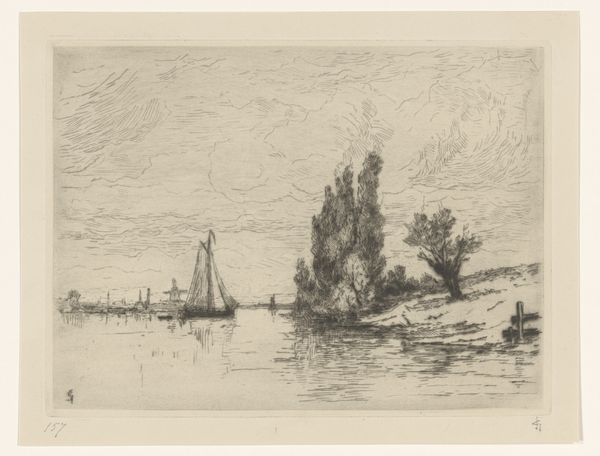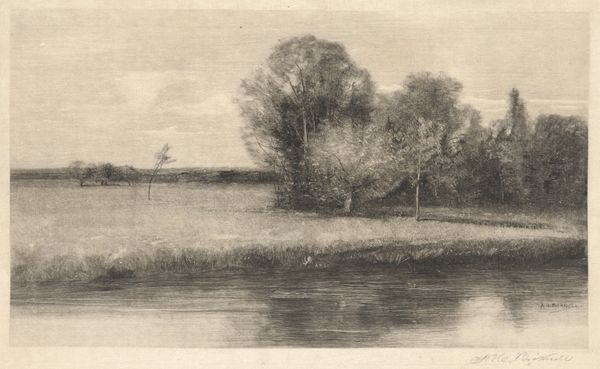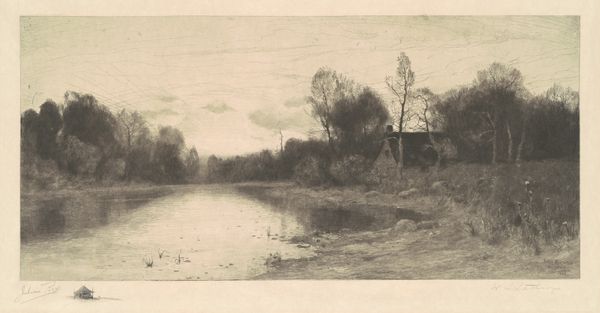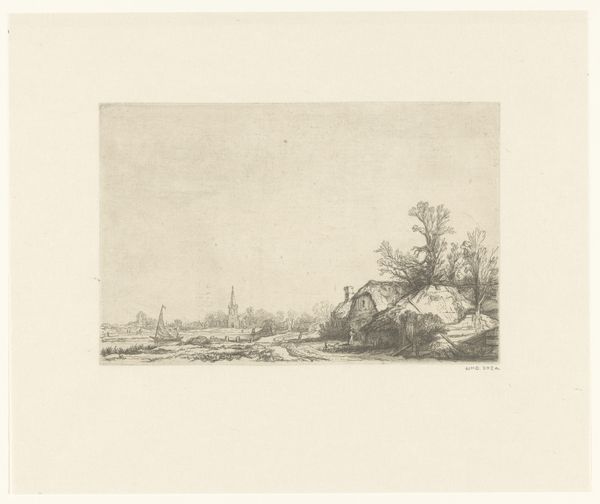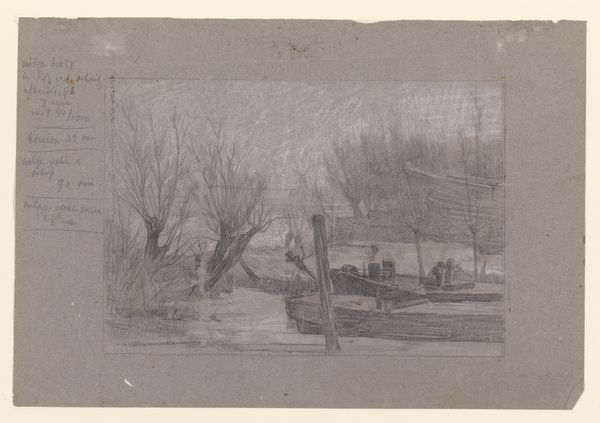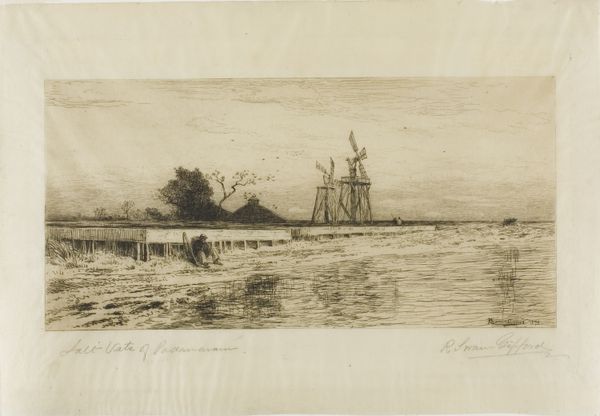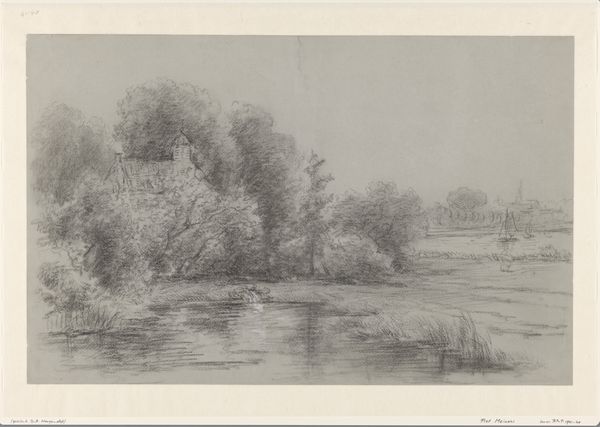
drawing, paper, pencil
#
drawing
#
dutch-golden-age
#
pencil sketch
#
landscape
#
paper
#
pencil
#
realism
Dimensions: height 296 mm, width 451 mm
Copyright: Rijks Museum: Open Domain
Curator: Well, if that isn't moody! It's like a dream I had once about windmills and secrets... or maybe a very intense weather forecast? Editor: This drawing, "Landschap met molen" or "Landscape with Mill," by Egbert Rubertus Derk Schaap, likely created between 1872 and 1939, exemplifies the Dutch Golden Age's continued fascination with landscape, captured here through the mediums of pencil and paper. Curator: Dutch Golden Age? Sounds about right! There's a stillness, you know? But also a kind of urgent, scribbled energy, especially in those trees. Did he just REALLY want to capture that exact moment the light changed? Editor: The dynamic mark-making, certainly. Observe the layering of lines, creating depth and shadow. Schaap employs hatching and cross-hatching to give form to the mill and surrounding foliage. It’s almost like he’s mapping the visual field through touch. Curator: Mmm, mapping… That’s good. For me, though, it’s more about feeling. The way the windmill looms but also seems kinda fragile? It makes you think about time, and the land, and the smallness of everything, really. The reflections in the water are beautifully rendered and further emphasized the tranquility of the landscape. Editor: Precisely. There’s a clear interplay between structure and texture, between the solid form of the windmill and the almost chaotic scribbles representing the natural elements. This tension animates the composition. Consider also, the significance of the windmill itself as a symbolic nexus of technology and nature, controlling and harnessing power from the land. Curator: Harnessing power… I like that. He has almost personified it. But still... secrets, you know? I just know it! Editor: A projective reading. A valid response to art's capacity to evoke. On our end, we see the artist grappling with the semiotics of landscape, inverting traditional representation through abstract means. Curator: Alright, alright! Point taken, brainbox. Even so, give me moody windmills and artistic "secrets" anytime. Thanks for guiding us on this drawing; I leave it feeling quite contemplative. Editor: Indeed. Understanding art necessitates looking closer and engaging our sense of history and art theory, or the mood takes a total precedence.
Comments
No comments
Be the first to comment and join the conversation on the ultimate creative platform.
